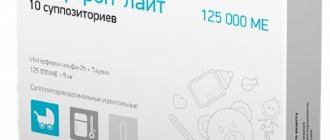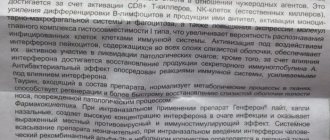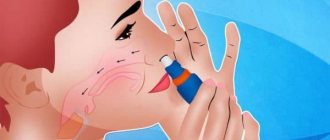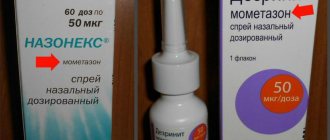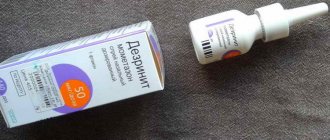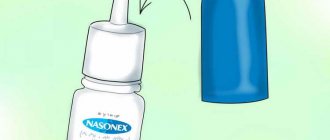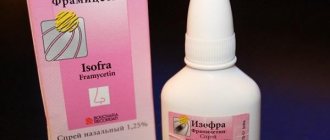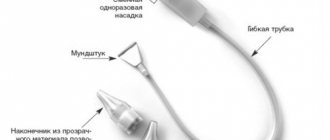Pharmacodynamics and pharmacokinetics
Xylometazoline is a drug belonging to the group of decongestants , which have local vasoconstrictor effectiveness, as a result of which they are widely used in ENT practice . The drug has a pronounced alpha-adrenomimetic effect . Local application of xylometazoline to the mucous membranes of the nose and nasopharynx leads to a narrowing of the blood vessels in them, as well as the elimination of hyperemia and swelling and, as a result, to the relief of nasal breathing in painful conditions that occur with nasal congestion ( rhinitis ).
Xylometazoline has a balanced pH characteristic of the nasal cavity and is quite well tolerated by patients with sensitive mucous membranes. The anticongestive effect of the drug does not prevent the discharge of nasal mucus.
Additional ingredients of the drops and spray - hypromellose and sorbitol - act as additional moisturizers, which helps reduce the symptoms of dryness and irritation of the mucous membranes observed with prolonged use of xylometazoline.
Levomenthol and eucalyptol included in the menthol and eucalyptus spray have a cooling and refreshing effect.
The use of the drug in therapeutic dosages does not cause hyperemia and does not lead to irritation of the mucous membranes. The pharmacological effectiveness of xylometazoline is noted within a few (3-5) minutes after its topical use and is observed for 12 hours.
The absorption of xylometazoline when applied topically tends to zero, and its plasma content is so small that it cannot be determined using existing analytical methods.
Otrivin Moisturizing formula, dosed nasal spray 0.1% 10ml
A country
Switzerland
The country of production may vary depending on the batch of goods. Please check with the operator for detailed information when confirming your order.
Active substance
Xylometazoline
Description
Otrivin Moisturizing - spray is used for respiratory diseases with symptoms of rhinitis (runny nose)*: • Helps fight nasal congestion thanks to the active ingredient - xylometazoline.
• Moisturizing formula helps reduce symptoms of irritation and dryness of the nasal mucosa. • Relieves congestion in 2 minutes, maintaining the effect for up to 12 hours*. * Instructions for medical use, RU No. P N011649/04 dated 10.09.08
Compound
1 ml of the drug contains: Active ingredient: xylometazoline hydrochloride 1 mg. Excipients: sodium dihydrophosphate dihydrate 5 mg, sodium hydrophosphate dodecahydrate 1.7 mg, disodium edetate 0.5 mg, benzalkonium chloride 50% solution 0.1 mg (in terms of benzalkonium chloride 0.05 mg), sorbitol 70% 20 mg , hypromellose-4 thousand 5 mg, sodium chloride 4 mg, purified water up to 1 ml.
Product description
Transparent, colorless solution with virtually no odor
pharmachologic effect
Xylometazoline belongs to the group of local vasoconstrictors (decongestants) with an α-adrenomimetic effect, causing constriction of the blood vessels of the nasal mucosa, eliminating swelling and hyperemia of the nasopharyngeal mucosa. Xylometazoline also reduces the accompanying hypersecretion of mucus and facilitates the drainage of nasal passages blocked by secretions, and thus improves nasal breathing during nasal congestion. Xylometazoline is well tolerated by patients with sensitive mucous membranes; its effect does not interfere with mucus secretion. Xylometazoline has a balanced pH value characteristic of the nasal cavity. The drug contains inactive components - sorbitol and hypromellose (methylhydroxypropylcellulose), which are humectants. Thus, the moisturizing formula helps reduce the symptoms of irritation and dryness of the nasal mucosa that occur with long-term use of xylometazoline. In therapeutic concentrations, the drug does not irritate the mucous membrane and does not cause hyperemia. The effect begins 2 minutes after application and lasts for 12 hours (for example, throughout the night). In vitro studies have shown that xylometazoline inhibits the infectivity of human rhinovirus, which causes the common cold. When applied topically in recommended dosages, it is practically not absorbed, plasma concentrations are below the detection limit.
Indications for use
Acute respiratory diseases with symptoms of rhinitis (runny nose), acute allergic rhinitis, hay fever, sinusitis, eustachitis, otitis media (to reduce swelling of the nasopharyngeal mucosa). Preparing the patient for diagnostic manipulations in the nasal passages.
Contraindications
Hypersensitivity to xylometazoline and other components of the drug, arterial hypertension, tachycardia, severe atherosclerosis, glaucoma, dry rhinitis or atrophic rhinitis, hyperthyroidism, condition after transsphenoidal hypophysectomy, surgical interventions on the meninges (history), children under 12 years of age.
Carefully
With caution: diabetes mellitus; pheochromocytoma; diseases of the cardiovascular system (including ischemic heart disease, angina pectoris); prostatic hyperplasia; with increased sensitivity to adrenergic drugs, accompanied by insomnia, dizziness, arrhythmia, tremor, increased blood pressure.
Use during pregnancy and lactation
The drug should not be used during pregnancy. During lactation, the drug should be used only after a thorough assessment of the risk-benefit ratio for the mother and baby, under the supervision of a physician. Do not exceed the recommended dosage
Directions for use and doses
Intranasally. Adults and children over 12 years of age: 1 injection into each nasal passage 3 times a day. Should not be used more than 3 times a day. It is recommended to carry out the last application immediately before bedtime.
Side effect
Classification of the frequency of occurrence of adverse reactions: very often (≥ 10); often (≥1/100, Immune system disorders: Very rare: hypersensitivity reactions (angioedema, rash, itching). Nervous system disorders: Common: headache. Mental disorders: Rare: insomnia, depression (with long-term use in high doses).Visual disorders: Very rare: impaired clarity of visual perception. Cardiac disorders: Rare: palpitations. Very rare: tachycardia, arrhythmia. Vascular disorders: Rare: increased blood pressure. respiratory system, chest organs and mediastinum: Common: irritation and/or dryness of the nasal mucosa, burning, tingling, sneezing, hypersecretion of the nasopharyngeal mucosa, drug-induced rhinitis Gastrointestinal disorders: Common: nausea Rare: vomiting. General disorders and disorders at the injection site: Common: burning at the application site.If any of the adverse reactions indicated in the instructions get worse, or you notice any other unwanted reactions not listed in the instructions, tell your doctor.
Overdose
Xylometazoline, when administered topically in an excessive dose or accidentally ingested, can cause severe dizziness, increased sweating, a sharp decrease in body temperature, headache, bradycardia, increased blood pressure, respiratory depression, coma and convulsions. Following an increase in blood pressure, a sharp decrease may be observed. Appropriate supportive measures should be taken if overdose is suspected, and in some cases immediate symptomatic treatment under medical supervision is indicated. These measures should include monitoring the patient for several hours. In case of severe poisoning with cardiac arrest, resuscitation efforts should last at least 1 hour.
Interaction with other drugs
Xylometazoline is contraindicated in patients currently receiving MAO inhibitors or who have received them within the previous 2 weeks. The simultaneous use of tri- or tetracyclic antidepressants and sympathomimetic drugs can lead to an increase in the sympathomimetic effect of xylometazoline, so this combination is recommended to be avoided.
special instructions
It is not recommended to use continuously for more than 10 days. Do not exceed recommended doses, especially in children and the elderly. Long-term (more than 10 days) or excessive use of the drug may cause a rebound effect (rhinitis medicamentosa) and/or atrophy of the nasal mucosa. Benzalkonium chloride, which is part of the drug, can cause irritation of the nasal mucosa.
Release form
Dosed nasal spray, 0.1%. 10 ml of the drug in a white or transparent bottle made of high-density polyethylene, equipped with a pump dispenser with a tip and a protective cap made of polyethylene. The bottle along with instructions for use is placed in a cardboard pack. Secondary packaging is allowed to have a first-opening control.
Storage conditions
At a temperature not exceeding 30 C, out of the reach of children.
Best before date
3 years. Do not use after expiration date.
Indications for use
The use of Otrivin drops or spray is indicated for:
- observed otitis media (in order to reduce swelling of the mucous membranes of the nasopharynx);
- diagnosed acute respiratory infections occurring with manifestations of rhinitis ( runny nose );
- eustachites;
- acute rhinitis of allergic etiology;
- allergic seasonal rhinoconjunctivitis;
- sinusitis;
- preparing the patient for diagnostic procedures in the nasal passages.
Contraindications
The administration of any of the pharmacological forms of Otrivin is contraindicated in the following cases:
- atrophic rhinitis;
- arterial hypertension;
- hyperthyroidism;
- tachycardia;
- conditions after transsphenoidal hypophysectomy ;
- severe atherosclerosis ;
- surgical operations on the meninges (in history);
- glaucoma;
- increased personal sensitivity to drug ingredients;
- under the age of 1 year (for 0.05% of drugs), up to 12 years (for 0.1% of drugs).
With extreme caution, it is possible to prescribe any of the dosage forms of Otrivin for:
- pregnancy;
- diabetes mellitus;
- breastfeeding;
- cardiovascular pathologies;
- prostate adenoma;
- increased sensitivity to the effects of adrenergic drugs, occurring with increased blood pressure , insomnia , arrhythmia , dizziness , tremor .
Features of good stagnation
Otrivin, nasal drops 0.05%, do not administer to children under 1st birthday.
Drying for children aged 1 to 11 is recommended only under adult supervision.
The drug should not be administered to children older than 7-10 days after birth.
Otrivin, nasal drops 0.1%, do not administer to children under 12 years of age.
The drug should not be left standing for more than 10 days after use. Excessive or excessive congestion can lead to renewed nasal congestion and/or atrophy of the nasal mucosa.
The drug, like other sympathomimetics, should be administered with caution to patients who may have strong reactions to adrenergic reactions, such as sleeplessness, confusion, tremors, cardiac arrhythmia or displacement of the arterial pressure.
Do not exceed the recommended dose of the drug, especially when treating children and especially in summer.
The drug should be administered with caution to patients with cardiovascular disease, arterial hypertension, blood diabetes, thyroid hyperfunction, pheochromocytoma, hypertrophy in front of the periphery, and also do not stagnate patients who have undergone concomitant treatment with MAO inhibitors and for 2 days after their administration zastosuvannya.
The drug contains benzalkonium chloride, which can cause irritation of the nasal mucosa.
Side effects
Local reactions from the mucous membranes (most often observed with frequent and/or prolonged use):
- hypersecretion;
- dryness and/or irritation;
- tingling or burning sensation;
- sneezing;
- swelling.
Systemic reactions (most often observed with frequent and/or prolonged use):
- nausea, vomiting;
- blurred vision;
- headache;
- tachycardia;
- allergic manifestations;
- feeling of heartbeat;
- insomnia;
- arrhythmia;
- dizziness;
- increased blood pressure;
- depressive states.
Side effects
Various negative reactions can be local or systemic. Side effects affecting the nasal cavity are often observed with prolonged and underdosed use of the runny nose spray.
Possible:
- Irritation and dryness of the mucous membrane.
- Burning and tingling sensation in the nose.
- Sneezing.
- Excessive secretion of mucous secretion, which makes nasal breathing difficult.
- Swelling that disappears only when using the drug.
Adverse reactions of a systemic nature are rare, but this does not mean that they can be ignored.
These include:
- Dyspeptic disorders (vomiting and nausea).
- Headache.
- Dizziness.
- Increased heart rate.
- Allergic reactions.
- Sleep disturbance.
- Increased blood pressure.
To avoid negative consequences, you must listen to your doctor’s recommendations and not exceed the period of treatment with a spray or drops for a runny nose. Dosed use according to indications is not only safe, but also an effective way to relieve nasal congestion.
Author: Violeta Kudryavtseva, doctor, especially for Moylor.ru
Instructions for use of Otrivin
Otrivin drops, instructions for use
Before using the drops, you should thoroughly clean the nasal passages, for which it is recommended to use products in the form of a cleansing spray containing sea water , for example Otrivin Sea.
Otrivin nasal drops 0.1% are intended for the treatment of patients over 12 years of age. You can drop 2-4 drops into each nasal passage once. This instillation procedure can be performed no more than 3 times per day. The therapeutic course should not exceed 10 days.
The instructions for Otrivin for children in the form of 0.05% drops recommend their use for the treatment of children 1-12 years old, under the supervision of adults. At the age of 1-6 years, instillation of 1-2 drops per day into each nasal passage is recommended, with a duration of treatment not exceeding 7 days. At the age of 6-12 years, you can instill children's Otrivin 2-4 drops into each nasal passage 2-3 times every 24 hours. The duration of treatment should be limited to 7-10 days.
Otrivin spray, instructions for use
Just as when using drops, before using the spray it is necessary to clean the nasal passages using Otrivin Sea spray or another similar preparation containing sea water .
Patients over 12 years of age are recommended to use a 0.1% spray. One injection is made into each nasal passage, with a frequency of no more than 3 times a day. The duration of therapy should not exceed 10 days.
Spray for children 0.05% is indicated for use from 1 to 12 years old, under the supervision of adults. For children 1-6 years old, 1 injection procedure is recommended in each nasal passage, with a frequency of 1-2 times every 24 hours. Patients 6-12 years old can receive single injections into each nasal passage 2-3 times a day. It is better to limit the duration of treatment to 7 days.
Composition and release form
The active ingredient that provides a positive effect from the use of Otrivin nasal drops is xylometazoline hydrochloride. The chemical compound belongs to the group of adrenergic agonists, which have a constricting effect on the vessels of the nasal cavity. The classic version of the drug is presented in the form of a spray and drops with a concentration of the active component of 0.1% and 0.05%, available in 10 ml bottles. Otrivin Baby is available in plastic dropper bottles of 20 ml, or in disposable ampoules of 5 ml.
Otrivin Menthol is a modification of the traditional xylometazoline spray with the addition of menthol and eucalyptus. Sold in plastic white or transparent bottles of 10 and 15 ml.
Otrivin More is a solution of sea salt in aluminum bottles with a special dispenser nozzle, volume 50 and 100 ml. Otrivin More Forte is a hypertonic solution based on sea water enriched with menthol and eucalyptus oil. Available in 20 ml containers with a plastic dispenser.
Overdose
When using excessive dosages of Otrivin or using it for more than the time recommended by the instructions, side effects inherent to the drug may occur or an increase in already observed negative phenomena: increased heart rate , increased blood pressure , and occasionally confusion .
The treatment of such complications should correspond to the observed negative symptoms.
special instructions
Both Otrivin drops and spray should not be used for more than 10 days in a row. Excessive and/or prolonged use of the drug may cause the formation of stagnant reactive effects and/or atrophy of the nasal mucous membranes .
This drug should be prescribed with caution in patients who react strongly to the effects of adrenergic drugs , including manifestations of insomnia , increased blood pressure, tremor , dizziness, and cardiac arrhythmia .
Exceeding the recommended dosages of Otrivin should be avoided, especially when treating elderly patients and children.
Patients suffering from cardiovascular pathologies, diabetes mellitus , arterial hypertension, pheochromocytoma , prostate adenoma , porphyria and thyroid pathologies require careful administration of the drug.
A bottle of drops or spray is intended exclusively for use by one patient, due to the possible spread of infection.
Benzalkonium chloride included in the drug may irritate the nasal mucous membranes.
Special instructions for the use of Otrivin
The drug should not be used for more than 10 days in a row. Longer treatment with the drug may cause the opposite effect. Prescribe with caution to patients who, when using adrenergic drugs, experience strong reactions, expressed in the form of insomnia, dizziness, yeast, arrhythmias, and increased blood pressure. The recommended dose of the drug should not be exceeded, especially when treating children and the elderly. Prescribe the drug with caution to patients with cardiovascular diseases, hypertension (arterial hypertension), closed-angle glaucoma, diabetes mellitus, and thyroid diseases. Use during pregnancy and lactation. The drug is contraindicated during pregnancy due to its vasoconstrictor effect. There is no evidence of side effects of the drug in infants, during maternal treatment with the drug and breastfeeding. It is not known whether xylometazoline passes into breast milk, so women who are breastfeeding can use the drug when the expected benefit to the mother outweighs the potential risk to the baby. The drug does not affect the ability to drive vehicles or operate complex machinery when used in recommended doses.
Analogs
Level 4 ATX code matches:
Xymelin Eco
Xymelin
Nazivin
Galazolin
Lazorin
Nazivin Sensitive for children
Naphthyzin
Sanorin
Knoxprey
For the nose
Lazolvan Rino
Afrin
Rhinorus
Eucazoline Aqua
Rinazolin
Grippostad Reno
Farmazolin
Xylometazoline
Nazol Advance
Nazol Baby
Analogs of the drug in the form of drops or sprays, the main effects of which are identical to those of Otrivin:
- Nazivin;
- Vicks Active;
- Tizin;
- Nazol;
- Lazorin;
- Naphthyzin;
- Sanorin;
- Afrin;
- Knoxprey;
- Rint;
- Operil;
- Rinazolin;
- Naso-Spray , etc.
Synonyms
Topical preparations with the same active ingredient:
- Farmazolin;
- For the nose;
- Galazolin;
- Grippostad Reno;
- Xylohexal;
- Grippocitron Rhinos;
- Xinos;
- Olinth;
- Meralis;
- Rinoxyl;
- Eucabalus;
- Tizin Xylo;
- Sialor , etc.
For children
All 1% dosage forms of the drug can be prescribed to children only after they reach 12 years of age. The instructions for the drug allow the use of Otrivin for children aged 1-12 years only at a dose of 0.5 mg/1 ml (0.05%), under the supervision of adults and without exceeding the recommended dosages. Reviews of the spray for children left by ENT doctors indicate the advisability of using this form of the drug to treat children after 6 years of age, while younger children (1-6 years old) are recommended to prescribe 0.05% drops.
Otrivin during pregnancy and lactation
Drops and spray of this drug are not recommended for use by pregnant women . In case of urgent need to get rid of the manifestations of rhinitis , the attending physician may prescribe children's Otrivin during pregnancy (0.05%), but under strict control and in minimal dosages.
If there is a need to use Otrivin during breastfeeding , its administration is possible in minimal doses and only if the benefits of treatment clearly exceed the possible risks for the baby.
Reviews about Otrivin
In the case of using Otrivin drops and spray strictly according to indications and in recommended dosages, reviews of its effectiveness and safety are mostly positive. Adult patients using this drug note the speed and duration of its action and very rarely experience any side effects.
Reviews of Otrivin for children are most often left by parents who have personally experienced its effects on their children. Drops of this drug perfectly cope with the symptoms of a runny nose in children from the age of 1 year and in recommended doses do not lead to any side effects. The same parents note that Otrivin spray for children is more suitable for treating adolescents, where this dosage form is more appropriate for use than drops.
Instructions and dosage
Before you start using Otrivin nasal drops, you must read the instructions and make sure that the patient does not have the conditions listed in the list of contraindications.
Before instilling the product, you should thoroughly clear the nasal passages of mucus. This can be done using Otrivin More spray. To do this, you need to tilt your head to the side, carefully insert the tip into the nostril and press the bottle 1-2 times, then blow your nose.
To spray the product with xylometazoline, you need to tilt your head slightly forward and make 1-2 injections into each nasal passage.
The drug, produced in drops with a concentration of the active substance of 0.05%, can be used to relieve congestion in children over two years of age, performing 1-2 injections into each nasal passage no more than 2 times a day for 5 days. Otrivin 0.1% is recommended for use in adults and children over 12 years of age.
If it is necessary to treat a runny nose in young children, the following types of Otrivin can be used:
- Otrivin Baby in drops – from birth;
- Otrivin Baby spray – from 3 months of age;
- Otrivin More - from 3 months;
- Otrivin More Forte with eucalyptus – from 6 years;
- Otrivin Children's with xylometazoline 0.05% - from 2 years.
Otrivin price, where to buy
The average price of Otrivin spray 0.1% is 150 rubles, 0.05% is 160 rubles.
The average price of children's Otrivin in drops 0.05% is 150 rubles, drops for adults 0.1% is 160 rubles.
- Online pharmacies in RussiaRussia
- Online pharmacies in UkraineUkraine
- Online pharmacies in KazakhstanKazakhstan
ZdravCity
- Otrivin Baby drops for irrigation of the nasal cavity in disposable bottles 5 ml 18 pcsNovartis Consumer Health
RUR 309 order - Otrivin Express nasal spray with menthol flavor acts in 25 seconds, 0.05%, 10 mlGSK Consumer Healthcare S.A.
RUB 255 order
- Otrivin Baby disposable replacement tips for nasal aspirator with absorbent filter 10 pcs.Novartis Consumer SA/STI Plastic
RUB 217 order
- Otrivin Baby nasal aspirator with replaceable nozzles for removing mucus from the nose from birth 3 pcs. Novartis Consumer SA/STI Plastic
RUB 325 order
- Otrivin 0.1% menthol nasal spray effective from 2 minutes action lasts up to 12 hours 10 mlNovartis Consumer Health
177 RUR order
Pharmacy Dialogue
- Otrivin Baby drops for irrigation of the nasal cavity, 5ml N18Laboratoire Unither
RUB 331 order
- Otrivin Baby disposable replacement tips N10STI Plastics
RUB 225 order
- Otrivin Complex nasal spray dosed, 10mlNovartis
RUB 248 order
- Otrivin Menthol nasal spray dosed 0.1% 10mlNovartis Consumer Heaich
RUB 195 order
- Otrivin Moisturizing formula, nasal spray metered 0.1% 10mlNovartis Consumer Heaich
RUB 157 order
show more
Pharmacy24
- Otrivin 0.1% 10 ml spray Novartis Consumer Health S.A., Switzerland
68 UAH.order - Otrivin Baby 5 ml N18 drops Novartis Consumer Health S.A., Switzerland
90 UAH order
- Otrivin Baby No. 10 nozzle for nasal aspirator Novartis Consumer Health S.A., Switzerland
81 UAH order
- Otrivin 0.05% 10 ml drops Novartis Consumer Health S.A., Switzerland
59 UAH order
- Otrivin with menthol 0.1% 10 ml spray Novartis Consumer Health S.A., Switzerland
72 UAH order
PaniPharmacy
- Otrivin Baby Nozzles for nasal aspirator No. 10 Switzerland, Novartis Consumer Health
93 UAH order
- Otrivin liquid Otrivin drops 0.1% 10ml Switzerland, Novartis Consumer Health
68 UAH order
- Otrivin liquid Otrivin drops 0.05% 10ml Switzerland, Novartis Consumer Health
68 UAH order
- Otrivin Baby nasal aspirator Otrivin Baby Nasal aspirator complete with 3 nozzles Switzerland, Novartis Consumer Health
135 UAH order
- Otrivin extra liquid Otrivin Extra spray name, dose. 10 ml bottle Switzerland, Novartis Consumer Health
85 UAH order
show more
Otrivin Baby drops for irrigation of the nasal cavity, 5ml N18
A country
France, Switzerland
The country of production may vary depending on the batch of goods. Please check with the operator for detailed information when confirming your order.
Description
A clean nose from birth!* Drops for irrigating the nasal cavity Otrivin Baby based on a sterile isotonic saline solution are approved for use from birth. They are a sterile physiological solution without preservatives in the format of disposable dropper bottles for cleansing and moisturizing the nasal mucosa, used in combination with the Otrivin Baby aspirator. Drops are used: - for colds - for allergic rhinitis - for daily hygiene * Instructions for use of medical devices
Compound
Otrivin Baby, drops for irrigation of the nasal cavity - a sterile isotonic saline solution without preservatives (saline solution). Contains sodium chloride 0.74%, also sodium hydrogen phosphate, sodium phosphate, macrogol glyceryl ricinoleate (Cremophor RH40) and purified water. Each dropper bottle contains 5 ml of sterile saline solution, and there are 18 dropper bottles per package.
Product description
Otrivin Baby drops for irrigation of the nasal cavity in disposable dropper bottles - created to care for the nasal cavity of infants and children up to 1 year and older, to moisturize and cleanse the nasal mucosa. This is a sterile isotonic sodium chloride solution, the pH level of which is close to the natural secretory fluid of the nasal mucosa
Indications for use
Hygiene of the nasal cavity for acute and chronic colds of the nose, paranasal sinuses and nasopharynx, also for allergic rhinitis - Daily hygiene of the nasal cavity to maintain the protective properties of the mucous membrane in conditions of increased dryness or air pollution (including air conditioning, central heating, etc. ) - Hygienic product for the prevention of infectious diseases of the nose and nasopharynx, as well as inflammatory processes after surgical interventions
Directions for use and doses
For the hygiene of the nasal mucosa and the prevention of diseases of the nose and nasopharynx: for children under 1 year of age and older, Otrivin Baby drops are used intranasally, 2-4 rinses in each nasal passage daily (more can be done if necessary). 1. One dropper bottle should be separated from the rest, open the bottle by turning the cap clockwise. 2. Nasal rinsing in a young child is carried out in a lying position. Turn the child's head to the side. You must first clear the nasal cavity of mucus. The solution is instilled into each nasal passage sequentially, pressing lightly on the bottle (introduce a few drops or more if more thorough cleansing is required). 3. The child should be seated; after a few seconds, if necessary, excess solution and mucus should be removed from the nasal cavity. If necessary, the procedure can be repeated. 4. The bottle is closed by pressing the cap.
special instructions
You should not use Otrivin Baby drops if you have an allergic reaction to any of the ingredients listed in the composition.
Release form
Each dropper bottle contains 5 ml of sterile saline solution, and there are 18 dropper bottles per package.
Storage conditions
Otrivin Baby should be stored at room temperature, avoiding heating. Keep out of the reach of children
Best before date
Shelf life 3 years. Do not use after the expiration date stated on the packaging.
